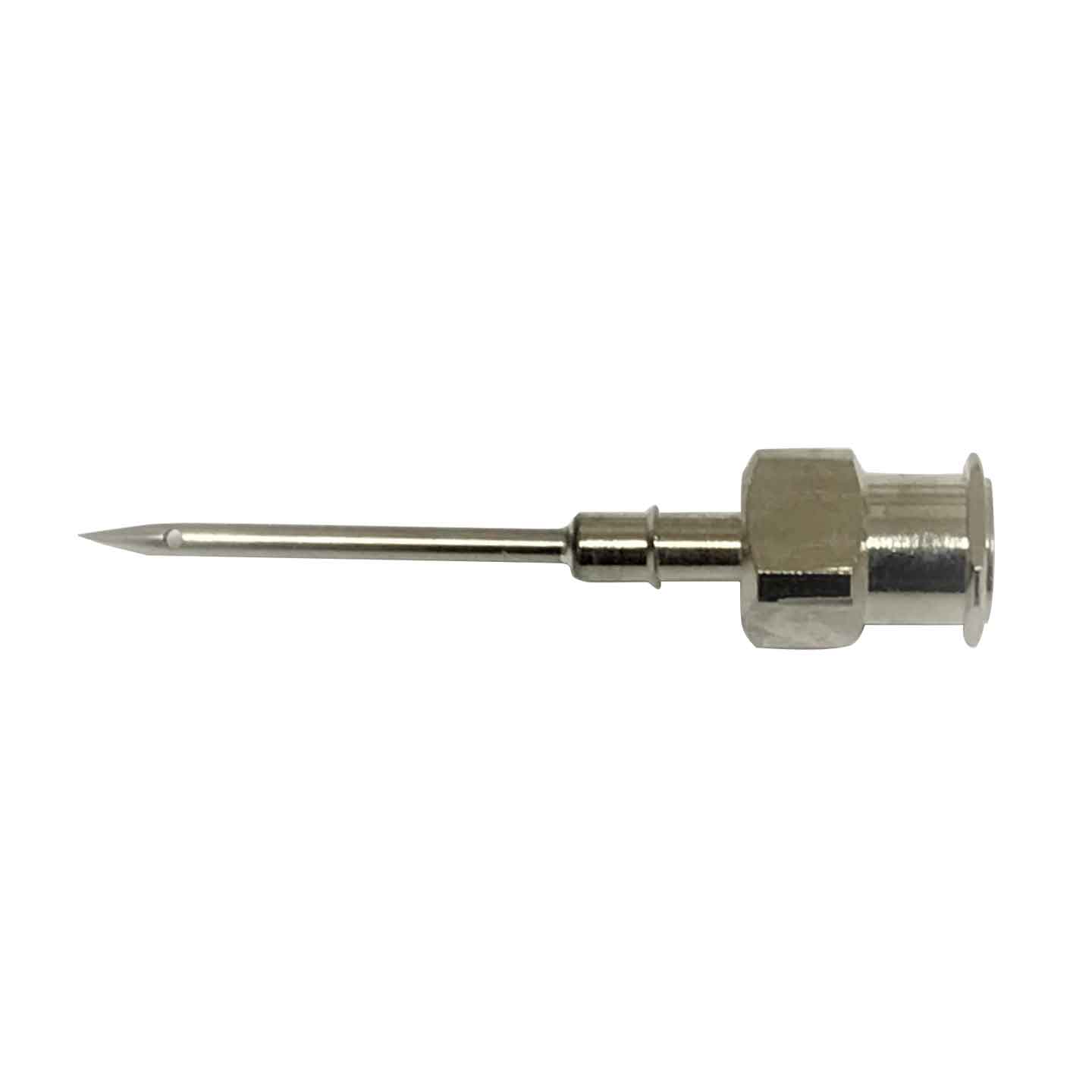At Bridge we always recommend that our customers use our specially designed sample needles and filters when sampling headspace gas. While using our needles and filters is what we recommend, some customers have attempted to lower costs by using other sample needles and filters on the instruments – with serious consequences, some of which we will outline below.

Bridge Analyzers proprietary needle technology
The Bridge sample needle is a cross-drilled pencil-point needle designed to provide redundant gas input ports located away from the closed needle tip. Hypodermic needles, by contrast, have a single beveled sharp point entry at the needle tip. When used to sample headspace gas, the Bridge needle pierces the overwrap and pulls in sample gas through the two cross-drilled entry ports – providing a minimum of gas restriction while maintaining low needle volume. These ports are perpendicular to the needle surface and located ¼ inch from the needle tip – providing lowered risk of needle contamination. In the case where one of the ports contacts product or liquid, gas is drawn through the other open port – resulting in no vacuum being produced at the blocked port, and reducing the incidence of needle contamination.
Hypodermic needles are provided in a variety of sizes – with some having substantially larger entry volume, and some having substantially greater gas flow restriction. All of them have sharp bevel cut front entry – which is not only dangerous to the user (needle pricks), but offer no protection from contaminate ingestion. If the needle inadvertently contacts product or liquid, it can easily ingest contamination as it has a single – forward-facing entry port – as they are designed for piercing and liquid delivery or ingestion.
Bridge Sample Needle vs Single Side Port Sample Needles
As described above, the Bridge sample needles have two gas ports positioned about ¼ inch from the end of a relatively short needle. Other side port needles are sometimes available of a similar design, but use only one side-port and are longer. These needles produce more gas restriction, are more prone to blockage, are not cleanable, and easier to bend. They are better than the hypodermic needles above, but still not recommended for use on Bridge products.

Hypodermic needle vs Bridge Proprietary Needle
Bridge Sample Filter vs Standard 25mm disk filters
The Bridge sample filter is specifically designed to lock on the sample needle and sample line and provide both particle and liquid contaminate protection to the sample gas flow. It has been designed to provide the protection required for infrared optics with the lowest dead-space volume and gas flow restriction. Standard 25mm disk filters have the following deficiencies.
Deficiencies of Standard 25mm Disk Filters
Male Luer Slip Fitting
Standard 25mm disk filters generally have a Male Luer Slip Lock design, as they are designed to be used with syringes under momentary pressure. The Male Luer Slip fitting is not secure enough to be reliably used for gas sampling systems operating under continuous vacuum. It is important that a locking Male Luer system be used between the filter and the sample needle to maintain sample gas integrity.
High Gas Restriction
Standard 25mm disk filters are very restrictive to gas flow, as they are designed for use with syringes high delivery pressure, not for gas sampling systems operating under low vacuum. We have commonly seen generic filters increase the sample pump load by a factor of five – resulting in slow gas response and early pump failure.
Not Liquid Blocking
Standard 25mm disk filters are often made with a filter medium which is particle blocking, but not liquid blocking. The result is that they do not prevent the ingestion of liquid into the analyzer, and subsequent failure of pneumatics components and contamination of infrared optics.
Consequences of using Unapproved Needles & Filters as opposed to Bridge Needles & Filters
The use of generic needles and filters versus Bridge needles and filters can result in poor and unreliable analyzer performance – frequent returns for service, and early product failure. In addition, the use of non-Bridge sample system components voids any product warranties.
Conclusion
At Bridge Analyzers, we are obsessed with precision. Every needle, filter, analyzer, part, and accessory we make and service is put through a series of stringent diagnostic and quality control tests to ensure that the products we deliver to our clients are sound, precisely calibrated, and ready to use with confidence. We know that you don’t have the time for second-guessing or doubt when you are testing headspace gas in your product, which is why we believe that being able to trust your equipment is of the utmost importance.
